
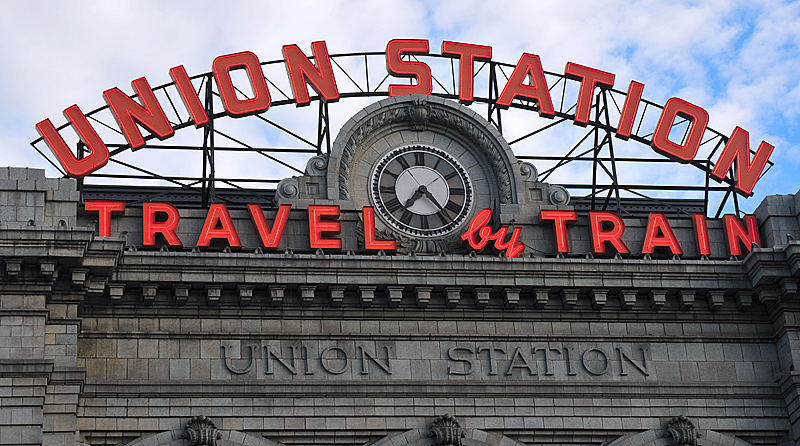





I first met Bob Richardson in Alamosa, Colorado at the Narrow Gauge Motel and Museum. The year was 1956, and somehow, by begging, pleading, nagging and calling, I had talked my parents into stopping there while on a family vacation to Colorado. I was talking to Bob when he interrupted and drew us outside to witness the early evening passage of a real, steam powered, narrow gauge, freight train headed west with two engines and a full train load of pipes destined for the oil and gas fields near Farmington, New Mexico. Two days later, our family rode the Denver & Rio Grande Western's Silverton Train behind Engine 476. It was all steam, narrow gauge, with vintage wooden cars and gorgeous Colorado scenery. I never got over it.
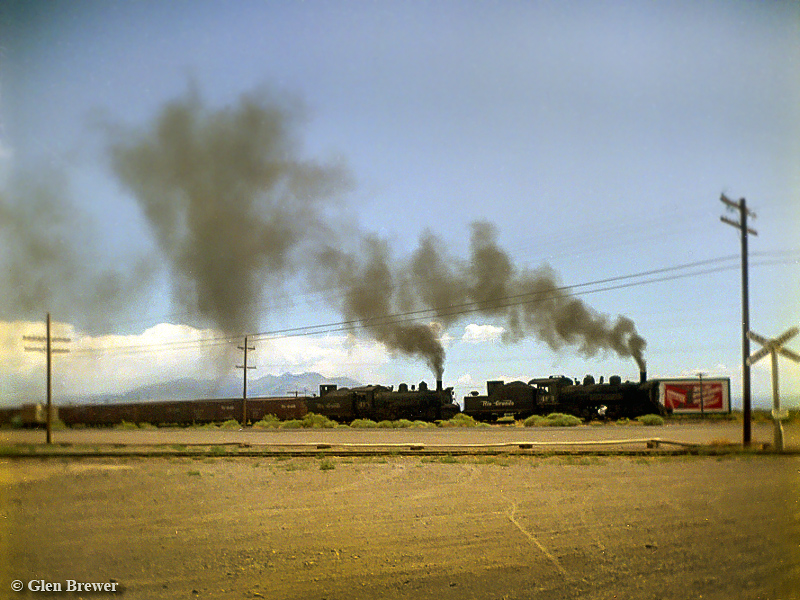
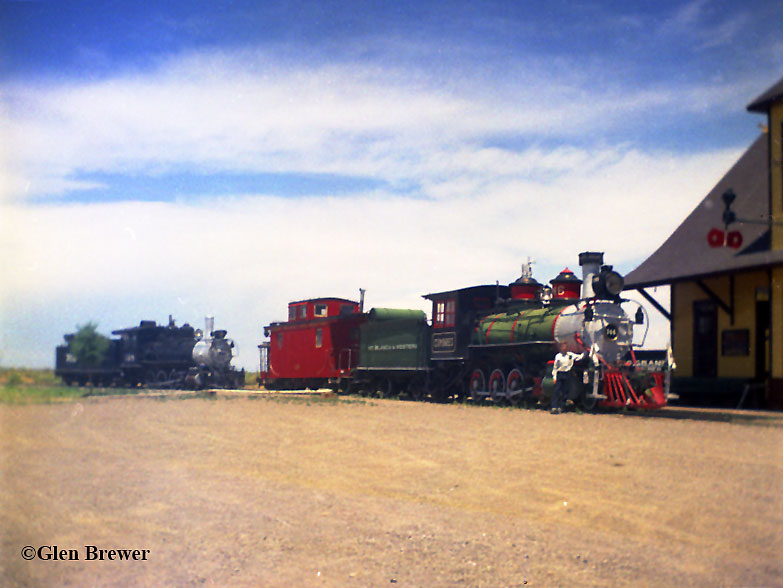
In 1953, Bob and a partner opened the motel conveniently located across the road from one of the last, still operating, all steam, narrow gauge railroads in America - originally the Denver & Rio Grande's San Juan extension. The Denver & Rio Grande started out as an all three-foot-gauge railway and became the most extensive narrow gauge railroad in the United States. By the time of my visit, only this remote line from Alamosa to Durango, with branches to Farmington, New Mexico and Silverton, Colorado remained three-foot gauge.
Following World War II, steam locomotives everywhere were being junked at an appalling rate; there were not many left in service by 1956. Colorado's remaining narrow gauge railroads, however, remained all steam simply because management had no desire to spend any more money on the narrow gauge.
From-time-to-time, Bob reported in his newsletter, "The Narrow Gauge News" (just send six, pre-addressed, stamped, Number 10 envelopes at a time). Most of the news, of course, was sad. Narrow tracks were being torn up, locomotives and cars scrapped and historic buildings, and records were being destroyed. Most dedicated enthusiasts either just took pictures or simply pined and wrung their hands over the tragic loss of some of their favorite things, but not Bob. He not only took many pictures -- he collected on a grand scale. He saved papers, photographs, lanterns, uniforms, silverware, rail, switches, mile posts, station signs, locomotives and cars -- in short, just about anything that he could.
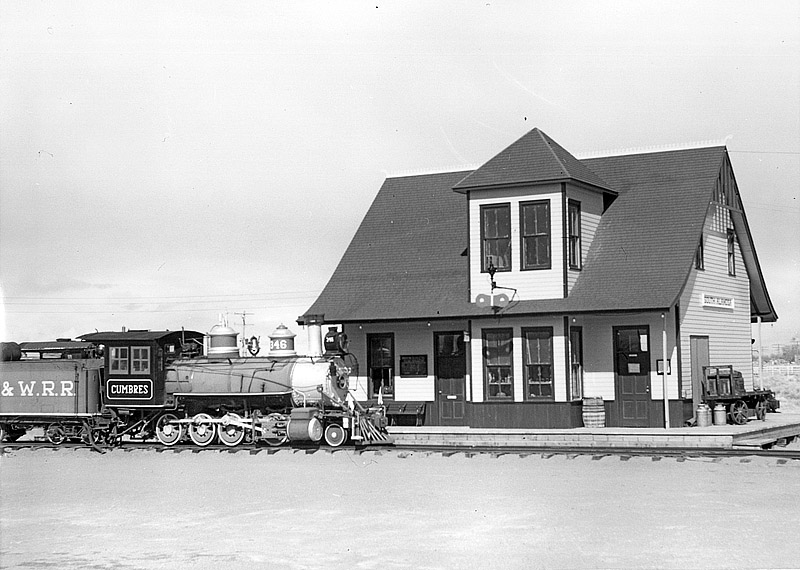
Early days in Alamosa (photo courtesy CRRM).
Bob and his partner in Alamosa built a buff and brown, Rio Grande Southern type station building for the motel office. Inside the building, was a budding little museum, featuring various smaller bits and pieces Bob had collected. Outside were the bigger relics featuring several narrow gauge locomotives, freight cars and, Bob's first rolling stock acquisition, D&RGW short caboose 0500. Motel room numbers, mounted on each door, were cast brass replicas of locomotive, smokebox, number plates.
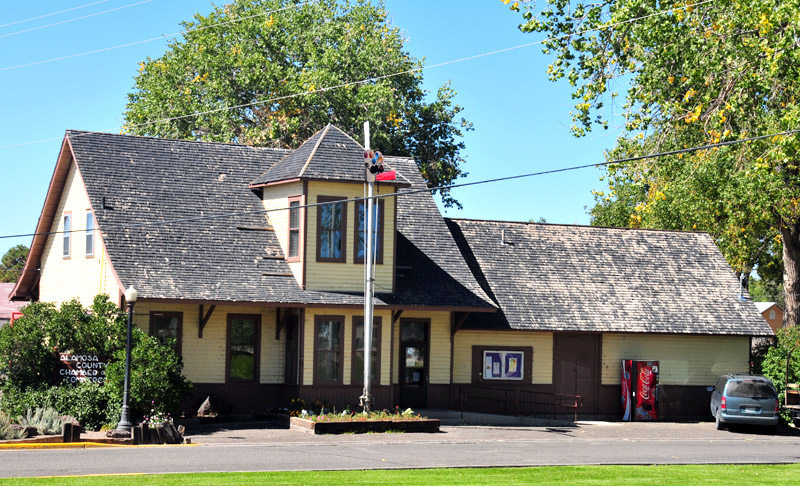
The relocated museum building in Alamosa. It has since been moved again-- this time to Monte Vista to serve the Rio Grande Scenic Railway as a depot.
When another enthusiast asked Bob why he did not save D&RGW 318, an engine slated to be scrapped, Bob replied in exasperation, "Why don't you save it?" Cornelius Hauck did. A new partnership was born and made it possible to do much more.
Alamosa was not a good location to draw a crowd, and there was some disharmony there. About 1958, most of the growing collection moved to the present 15-acre location in Golden, although a few items, including caboose 0500, had to be left behind in Alamosa. The sale of RGS locomotive Number 42 helped to make it all possible. The new museum opened for business July 1, 1959.
Golden itself is a historic, railroad town. William A. H. Loveland promoted the town to be the major city of Colorado. The town actually was the territorial capital from 1862 until 1867. Both Golden and Denver vied to be the primary supply city to the burgeoning mines in the mountains to the west. The first rails into the area arrived in Denver, but to remain competitive, Loveland built the Colorado Central Railroad, only the fourth railroad to lay track in Colorado, serving Golden but originally bypassing Denver three miles to the north. At Jersey Junction, it connected to the Denver Pacific and the Kansas Pacific. The CC finally built directly into Denver four years later. West of Golden, the CC tracks followed winding Clear Creek at the bottom of a canyon and three-foot gauge was chosen. The goal was to tap the booming gold and silver mining towns of Central City, Blackhawk, Idaho Springs and Georgetown.
Golden is about fifteen miles west of Denver just into Colorado's abrupt Front Range and along the banks of Clear Creek. The museum is on the southeast slope of North Table Mountain with Clear Creek and the huge Coors brewery below. Coors is still a major customer of the former Colorado Central (later Colorado & Southern and now BNSF).

The original museum building in Golden.
The big move made the collection much more accessible to a major population area and the gateway for many visitors to the state. In 1965, the Colorado Railroad Historic Foundation was established. Bob continued as executive director until he retired in 1991. Significant progress has continued since Bob left. The museum staff has grown to about thirteen, and there are many regular, dedicated volunteers.
Bob lived in an old farmhouse on the museum grounds. Near that site, the new Robert W. Richardson Library opened its doors in 1997. This attractive, brick, station-like facility houses and protects the museum's extensive collection of photographs, books and records. It is a significant source for research, especially regarding, but not limited to, Colorado railroads.

The Robert W. Richardson Library building.
A new brick, five-stall roundhouse, complete with dual gauge turntable, enables indoor, year around restoration work. Formally known as the Cornelius W. Hauck Restoration Facility, the building opened in July of 2000. No longer do volunteers have to work outdoors in all kinds of weather and tote their tools to and from the work site.

The Cornelius W. Hauck Restoration Facility.

Inside the roundhouse, DL&G 191 is undergoing cosmetic repairs. The boiler for D&RGW 318 is in the first stall.
The original museum building houses offices, exhibits, an extensive gift shop featuring a comprehensive collection of railway books and a large HO scale model railroad in the basement. Outside are a G scale model railroad, and over 100 narrow and standard gauge engines and cars - not including the 40 locomotives and cars belonging to the former Georgetown Loop Railroad's operator. Many track additions were essential for temporary storage of that equipment. During the time the museum had no operating steam locomotive of its own, the Georgetown Loop's equipment served the museum well.
Things are beginning to move about on the museum property. A Colorado & Southern rotary snowplow and Union Pacific 0-6-0 Number 4455, isolated for 35 years, nearly out of sight, were moved across an irrigation canal and a road to the museum's main grounds where they can now be seen close up for the first time. Office car 96 is now near the main museum building where Donald has found it easily accessed and a good setting for meetings.
New sidewalks avoid some of the old snow, slush and mud problems. Picnic tables and park benches invite visitors to make a day of their visit.
The museum collection has broadened in scope over the years, but it is still quite focused on railroads of Colorado. It is widely known as the place to go for Colorado narrow gauge enthusiasts, historians and researchers. By no means are these visitors all Colorado people or even residents the US. Within the US, Illinois, Texas and California visitors arrive frequently, but about 20 to 25 % of the visitors come from other countries with the UK, Australia, Switzerland, Japan, Canada and Germany well represented.
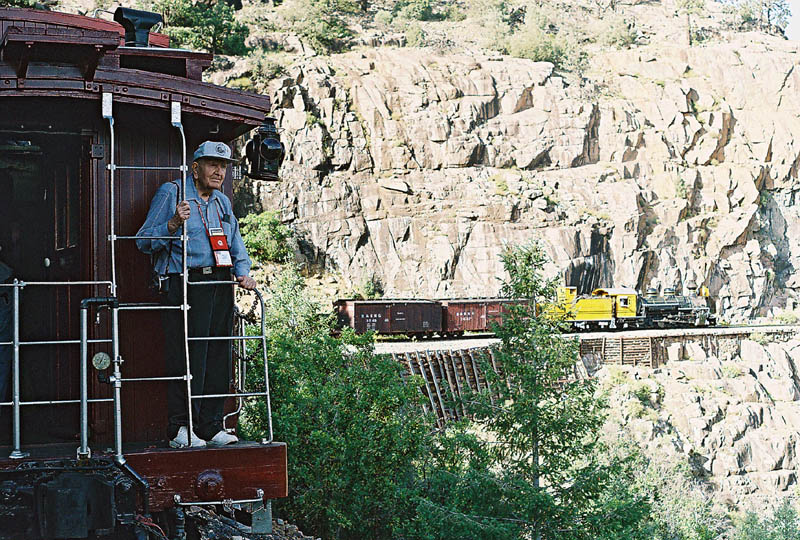
On August 24, 2006, Bob Richardson enjoyed his very first ride on the 0500. This D&RGW caboose was his first rolling stock acquisition for the nascent Narrow Gauge Museum in Alamosa. Photograph courtesy of Rod Jensen.
The summer before he died at the age of 96, in February of 2007, Bob Richardson was back in Colorado enjoying a grand tour of his old stomping grounds. Later, he wrote in a letter, "Trip enjoyable and seeing #9 run again after all these years was a real treat. That was the first time had a ride in the 0500, tho spent a couple of nights in it when motel crowded, so took a nap on a bunk while they had a night photo session at Rockwood." It was fitting that Bob was finally reunited with his old caboose, which is now in charter service on the Durango & Silverton Narrow Gauge.
Part I: Is this any way to run a railroad museum?
Colorado Railroad Museum
17155 W. 44th Avenue
Golden, CO
Mailing Address:
PO Box 10
Golden, CO 80402
Internet:
Web site: http://www.coloradorailroadmuseum.org/
e-mail: info@crrm.org
research questions: library@crrm.org